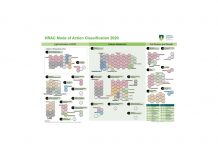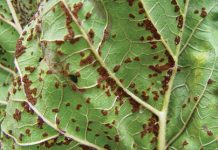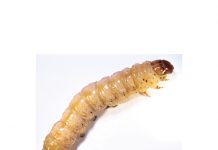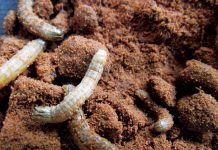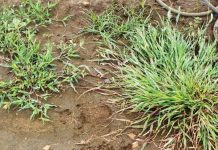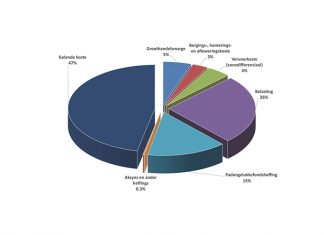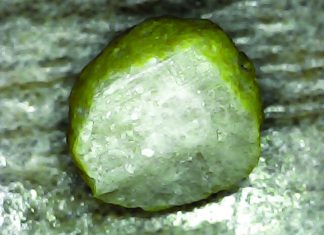September 2018
HESTIA NIENABER, ARC-Small Grain, Bethlehem
Herbicide resistance is a well-known occurrence in many crops in South Africa. Since the first confirmed case of herbicide resistant wild oats in 1986, various cases of herbicide resistance have been confirmed annually.
High levels of weed control are necessary to obtain the maximum yield possible. According to literature, the presence of weeds in a wheat field can reduce wheat yield with up to 33%. This high percentage reduction in yield will cause economic losses.
Various publications focussed on the control/management of herbicide resistance, but herbicide resistance seems to be ever increasing. One of the major reasons for the development/increase in herbicide resistance is the limited availability of herbicides from different mode of action groups in South Africa. This leads to the repeated use of herbicides from the same mode of action groups, as well as unregistered mixtures being used.
During a visit from an Australian study group, an Australian extension officer made the comment that they are starting to re-introduce ploughing into their management systems. This may come as a shock to producers in South Africa who are mainly practising conservation/no-till agriculture. The truth however, is that the Australian producers also practise CA, but the herbicide resistant weeds have become so problematic, that they needed to consider other control measures.
According to Dr Michael Renton (senior lecturer, University of Western Australia), mouldboard ploughing is the best way to control weeds. He suggests that it should not be done every year, as it will lead to other environmental problems. Moreover, it is expensive and time consuming. He ran numerous simulations and found that mouldboard ploughing once every four years was a good option for weed control. He found that even once in every eight years still had some benefits. Occasional mouldboard ploughing can be used to bury herbicide resistant weed seeds, effectively removing them from the gene pool.
Some more research done in Western Australia found that inversion ploughing can also be used with success. Inversion ploughing is used to fully invert the soil to ensure weed seeds that were on or just below the soil surface are placed at a depth where they cannot germinate. This can be practised every eight to ten years, with conservation tillage used in the intervening years.
In Western Australia, annual ryegrass seeds failed to establish and eventually died when soil was fully inverted to a depth greater than 20 cm using a specialist mouldboard plough fitted with skimmers. This single soil inversion event reduced annual ryegrass numbers by more than 95% at Katanning and Beverley, Western Australia, for a period of two years (www.agric.wa.gov.au).
Other methods of controlling weeds
Resistance can be prevented or slowed down by keeping to the following instructions:
- Rotate your crops if possible, as this will help suppress weeds through allelopathy (i.e., a biological phenomenon by which an organism produces one or more biochemicals that influence the germination, growth, survival, and reproduction of other organisms).
- Herbicides must be rotated so that the same herbicide is not used year after year.
- Implement crop rotation if possible. Crop rotation allows for using different herbicides on different weeds in the different crops that are planted. Herbicides with different modes of action can be utilised.
- Never make unregistered mixtures. Stick to label recommendations at all times.
- Keep records of herbicides used and also the rates at which the herbicides were applied.
- Regularly monitor your crops so that resistant patches can be observed in time to be controlled with more specific interventions, like spot spraying or physical removal.
- Apply the herbicide at the correct leaf stage of the weed and the crop.
- Make certain that the correct rate is always used, because rates that are too high or too low can select for herbicide resistance.
- Make sure that the spray equipment is correctly calibrated and cleaned thoroughly and that the person in charge of the spraying knows what he/she is doing. This helps to prevent or reduce the introduction of weed rhizomes, stolons and seeds into the fields.
- Always follow the instructions of the herbicide label.
Conclusion
Producers must realise that the herbicide resistance challenge in South Africa is not getting better and that they will have to adapt to make sure that they can keep on farming. Research concludes that producers will have to adapt and that part of that adaptation may include a return to mechanical ploughing.
For further information on the topic, feel free to contact the author at 058 307 3420 or deweth@arc.agric.za.
 References
References
https://www.agric.wa.gov.au/grains-research-development/crop-weeds-reduce-weed-seed-numbers-soil?page=0%2C3 (Accessed: Friday, 20 July 2018).
http://www.abc.net.au/news/rural/2015-08-12/herbicide-resistance-could-bring-back-the-plough/6690656 (Accessed: Friday, 20 July 2018).
https://phys.org/news/2015-08-weed-problems-occasional-plough.html#jCp (Accessed: Friday, 20 July 2018)

Publication: September 2018
Section: Focus on integrated pest control




